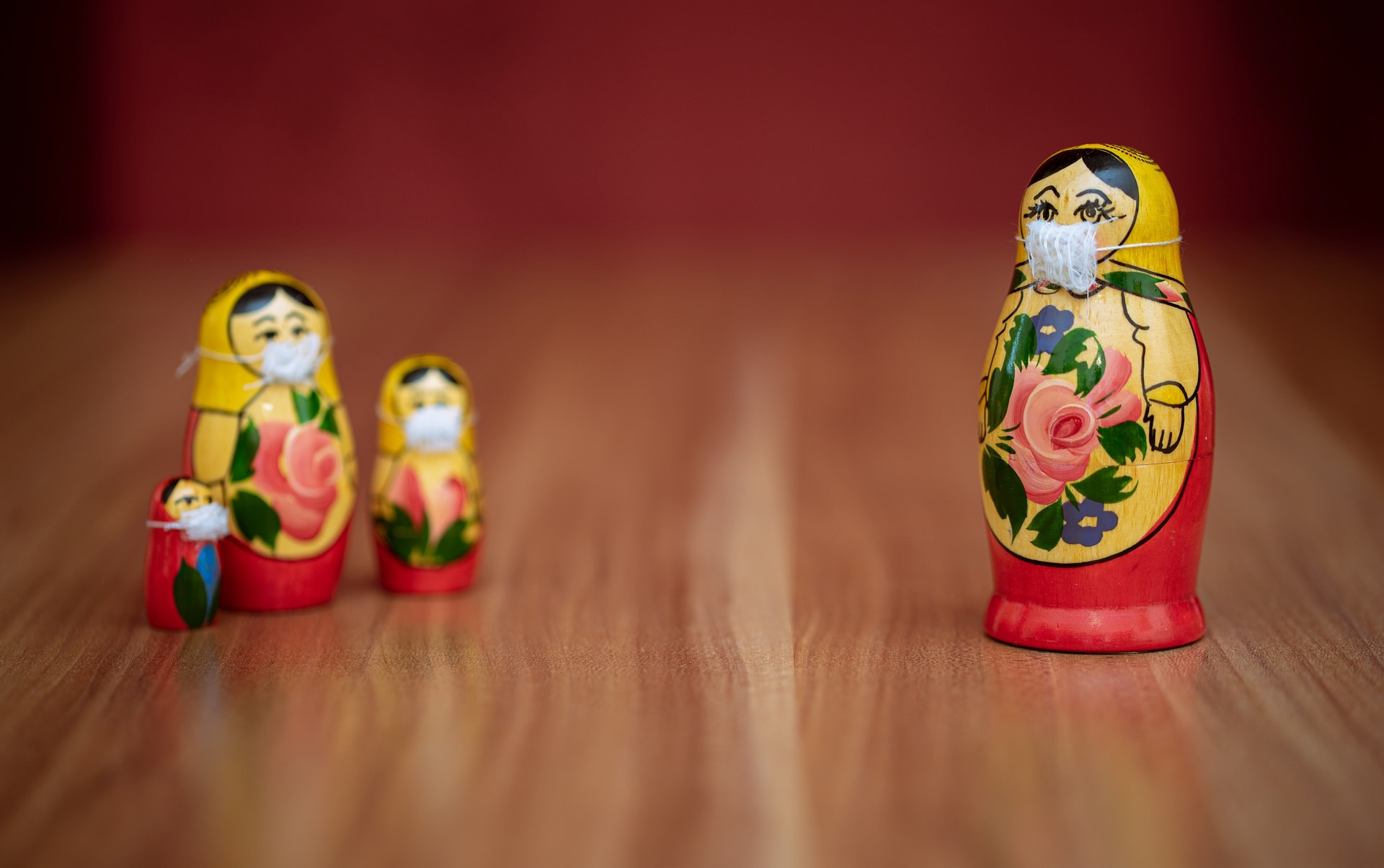The last time that the Olympics and the Wimbledon were cancelled, were during the world war. Nuclear bomb was the weapon that ended the war. But what is the weapon that can end the war against this Covid-19?
Research in behavioural economics finds that often one panics, or fears more than necessary, due to a bias in thinking that goes by the name of ‘Probability Neglect’; not considering the true probability of the event occurring, but being influenced by the gravity of the adversity.
Cass Sunstein (Feb 28, 2020), who co-authored the book ‘Nudge’ with the Nobel laureate Richard Thaler for his contribution to Behavioural Economics observes in a column in Bloomsberg:
‘But one thing is clear: A lot of people are more scared than they have any reason to be. They have an exaggerated sense of their own personal risk.’
A similar view has been expressed by Mark Travers (March 6, 2020) in the Forbes.
The reasoning for several such publications advocating that panic on the grounds of a person contracting the virus, is unjustified goes something like this: The probability of a person contracting the virus is extremely low (of the order of .0001, which could vary depending on the place one lives and such other factors). Further, 80% of those who contract the virus need no hospitalisation and would recover as they would recover from a common flu, and the fatality percentage is very low – Although the overall fatality rate is about 2%, if the one who has contracted the disease is in his forties, the fatality risk is only about 0.4%.
Though inordinate fear and panic may be unjustified from an analysis of the personal risk involved, such fear is functional, particularly in the context of the present scenario. Why? The measures to contain the pandemic are primarily social distancing and washing hands. These are to be practised by individuals, and so fear in the minds of individuals, would promote the effective practise of the measures needed to control the virus.
It is here that I wish to segregate fear, in the context of this pandemic, into two categories: fear that stems from Concern for the Self and fear that stems from Concern for Others.
Fear stemming from a Concern for the Self is the fear that grips one from the likelihood of being infected and the consequences one would suffer thereby. It is fear caused by one’s love for the self. Risk of one contracting the disease, being hospitalised and dying, was shown to be so low and consequently fear that stems from Concern for the Self, despite Probability Neglect bias, has been low. If this fear had gripped the public, the spread of the virus would have been arrested by people effectively practising social distancing.
Fear stemming from a Concern for Others is the fear that grips one due to the consequences others would suffer due to one being infected. It is fear caused by one’s love for others, one’s fellow human beings.
A brief analysis of consequences others would suffer, with a minimum of technicalities, is presented here. The primary purpose of these computations is to project in quantitative terms a realistic picture (erring on the conservative side without exaggerating) for one to appreciate. The next four paragraphs demand the reader to engage System-2 thinking. System-2 thinking is lazy, and behavioural economics predicts a disposition in the reader to skim through – discarding the matter as an elaboration of what is already known – without following the computations that demand System-2 effort. The author gently nudges, that the reader pursues through this difficulty for the next four paragraphs to truly place the consequences in the forefront of one’s consciousness. (For a detailed understanding of System-1 thinking and System-2 thinking, I recommend that the prudent reader consults ‘Thinking, Fast and Slow’, a classic authored by Daniel Kahneman (2011), another Nobel laureate, for his contribution to Behavioural Economics.)
A parameter R0, Basic Reproduction Number, refers to the mean number of individuals an infected person directly infects. It would be appropriate to consider R0 = 2, a conservative value for the current corona virus crisis. Another variable is the Generation Time, the mean time that an infected person takes to infect another person, since being infected. It would be appropriate to consider a value of 7 days (1 week) as the Generation Time for this virus, since this virus starts infecting others even before one is diagnosed with the disease.
Considering the above mentioned values, an infected person, whom we will call Mr. Prime, would have infected two others after one week (Generation Time). After two weeks the two others infected, would have infected four others. Thus the total number infected by Mr. Prime at the end of two weeks is 6 (2 directly infected by Mr. Prime at the end of one week + another 4 indirectly infected by Mr. Prime at the end of two weeks). Continuing this way, at the end of four Generation Times (4 weeks), the numbers infected by Mr. Prime would be 30. The reader is encouraged to check this out by simple mind arithmetic. To aid one’s memory, if we approximate 4 weeks as a month, it is easy to see that in 30 days Mr. Prime would have effectively infected 30 others.
Extending this further, one can see that in two months (8 weeks), Mr. Prime has been the sole cause for effectively infecting 510 people. (Research in behavioural economics foresees that a few prudent readers may observe that the number infected ought to be 900 and less prudent readers may suggest the number 60, and only few would agree with the number 510 as proposed by this author. This is the influence of the gullible System-1 thinking. Effortful System-2 thinking can however, lead a prudent reader to see that the number infected is indeed 510, under the given considerations.)
We further examine the consequences of people getting infected. If Mr. Prime has infected about 500 people in two months, 20% of them would get (or shortly would be) hospitalised and 2% of the 500 would die. Thus Mr. Prime would have been responsible for hospitalisation of 100 people (contributing to the mayhem for the demand of ventilators) and for the death of 10 people (2% of 500). It can be said that Mr. Prime, by having not taken steps to prevent himself from being infected, has effectively killed ten people; a case of serial homicides by negligent behaviour.
A corona infected person turns out to be a serial killer even before he or she has been diagnosed with the virus, and has no control over the serial killing sequence that has got triggered. Generally when a person is sick, people’s sympathies are with him or her and the sick person is seen as a victim. But the foregoing analysis shows, a corona infected person as a perpetrator. Not a very comforting perspective, as no one wishes to be a serial killer. Another way of describing the corona virus could be as a virus that when it infects, a normal human being turns into a serial killer, like a psychopath (-that you fall sick is a small matter).
But this perspective has potential to induce a very functional fear, panic, of having blood on one’s hands. This fear can lead to people being paranoid about being infected by the corona virus. Well, this fear bordering on panic and paranoia could be an effective weapon to stop the pandemic from spreading.
Are all those who have been diagnosed with Covid-19 guilty of being serial killers? The answer is no. Though they have indeed turned out to be killers, they are not guilty of being killers; they had not seen the virus from this perspective at the time of their being infected. But, despite being sensitised to this perspective, if one had not turned every stone to take the precautions, and had ended with an infection, yes, he indeed is guilty of being a serial killer.
The war against Novel Corona virus can indeed be fought with the functional fear that stems from Concern for Others, love for your fellow human being; and not from fear that stems from Concern for the Self.
A gentle nudge: Love your neighbour as yourself to end this war.
References:
Sunstein, Cass R; Feb 28, 2020; ‘The Cognitive Bias that Makes Us Panic About Coronavirus’, ‘Technology and Ideas’, Bloomberg
Travers, Mark; Mar 06, 2020; ‘Psychology Research Explains Panic Over Coronavirus – and How You Can Calm Down’, Editor’s Pick, Forbes
Kahneman, Daniel; 2011, ‘Thinking, Fast and Slow’, Allen Lane, Penguin Books
Image Credit: Evgeni Tcherkasski on Unsplash











